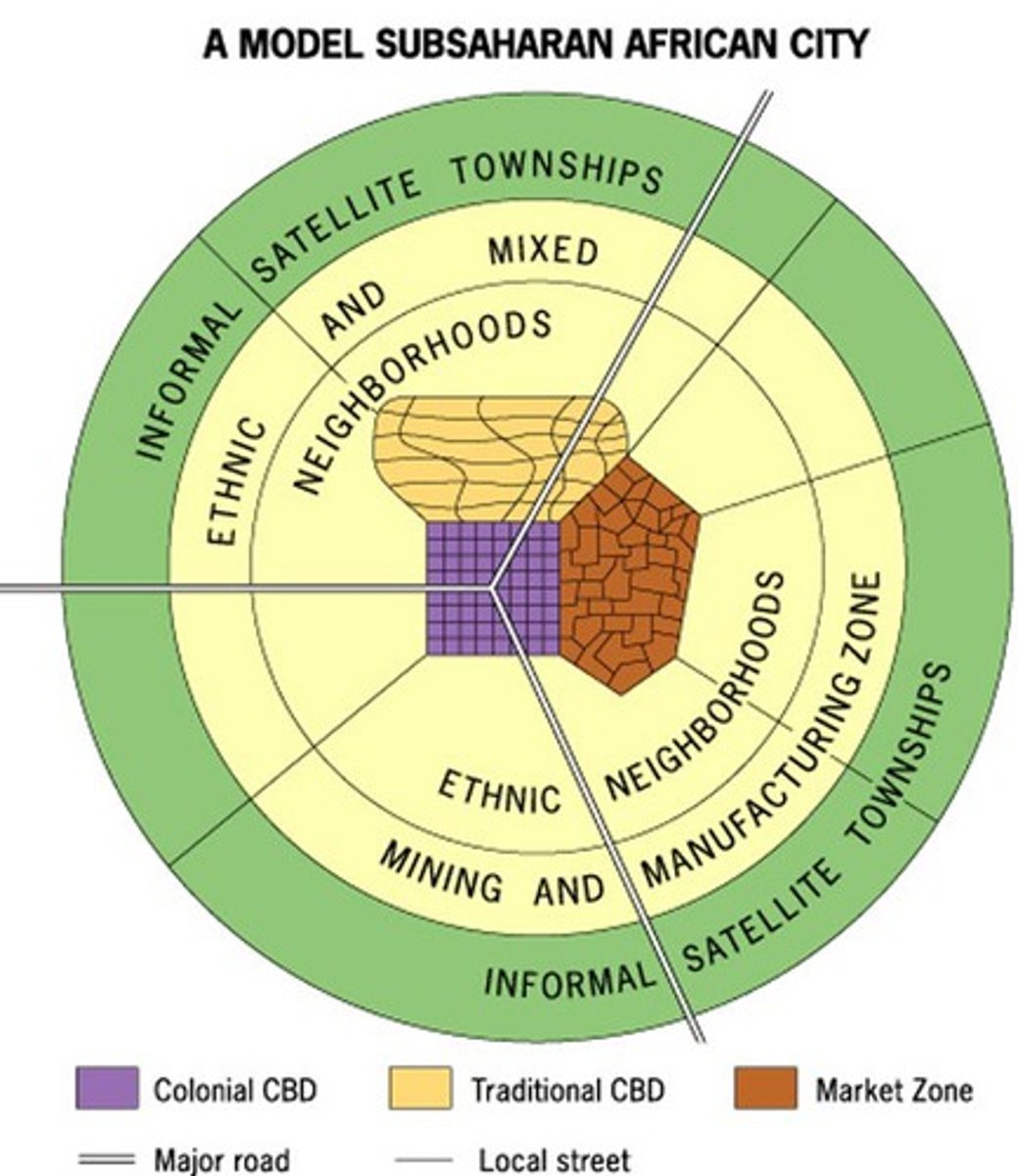AP Human Geography Urban Models
1/38
There's no tags or description
Looks like no tags are added yet.
Name | Mastery | Learn | Test | Matching | Spaced |
|---|
No study sessions yet.
39 Terms
Sector Model
Area of Use: Cities
Author: Homer Hoyt in 1939
What does the Sector Model explain?
The city develops in a series of sectors, not rings. Certain areas of the city are more attractive for various activities, originally because of an environmental factor or even by mere chance
Strengths of the Sector Model
-Allows for an outward progression of growth in each of the sectors
-Solved the problems with the model that Burgess created
Weaknesses of the Sector Model
-Based on central railroad transportation and not cars
Effectiveness of the Sector Model
This model was not based on central railroad transportation, not taking into account that most people would use cars in the future
Sector Model diagram
1. Central business district
2. Transportation and industry
3. Low-class residential
4. Middle-class residential
5. High-class residential
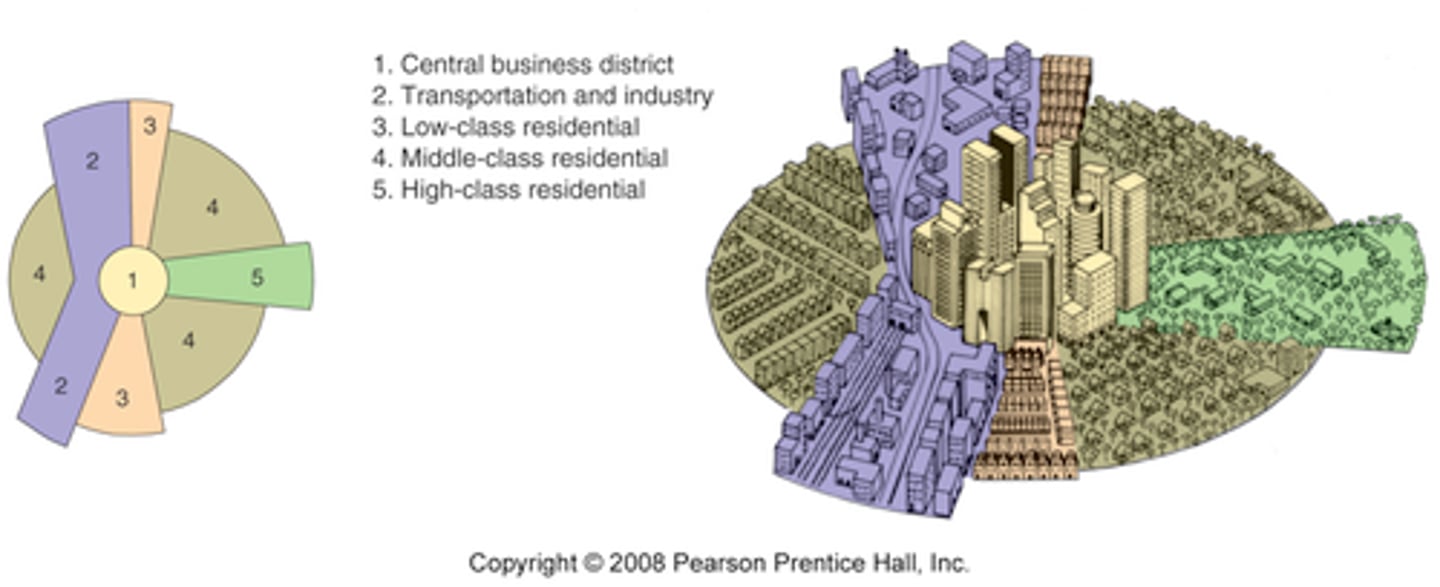
Multiple Nuclei Model
Area of Use: Cities
Author: Harris and Ullman in 1945
What does the Multiple Nuclei Model explain?
According to the multiple nuclei model, a city is a complex structure that includes more than one center around which activities revolve
Strengths of the Multiple Nuclei Model
-Takes into account the factors of decentralization in city structure
-Provides a framework for understanding the distribution of social and economic groups
Weaknesses of the Multiple Nuclei Model
-No consideration of influence of physical relief and government policy
-Does not completely explain why different types of people live in a specific area
Multiple Nuclei Model diagram
1. Central business district
2. Wholesale, light manufacturing
3. Low-class residential
4. Medium-class residential
5. High-class residential
6. Heavy manufacturing
7. Outlying business district
8. Residential suburb
9. industrial suburb
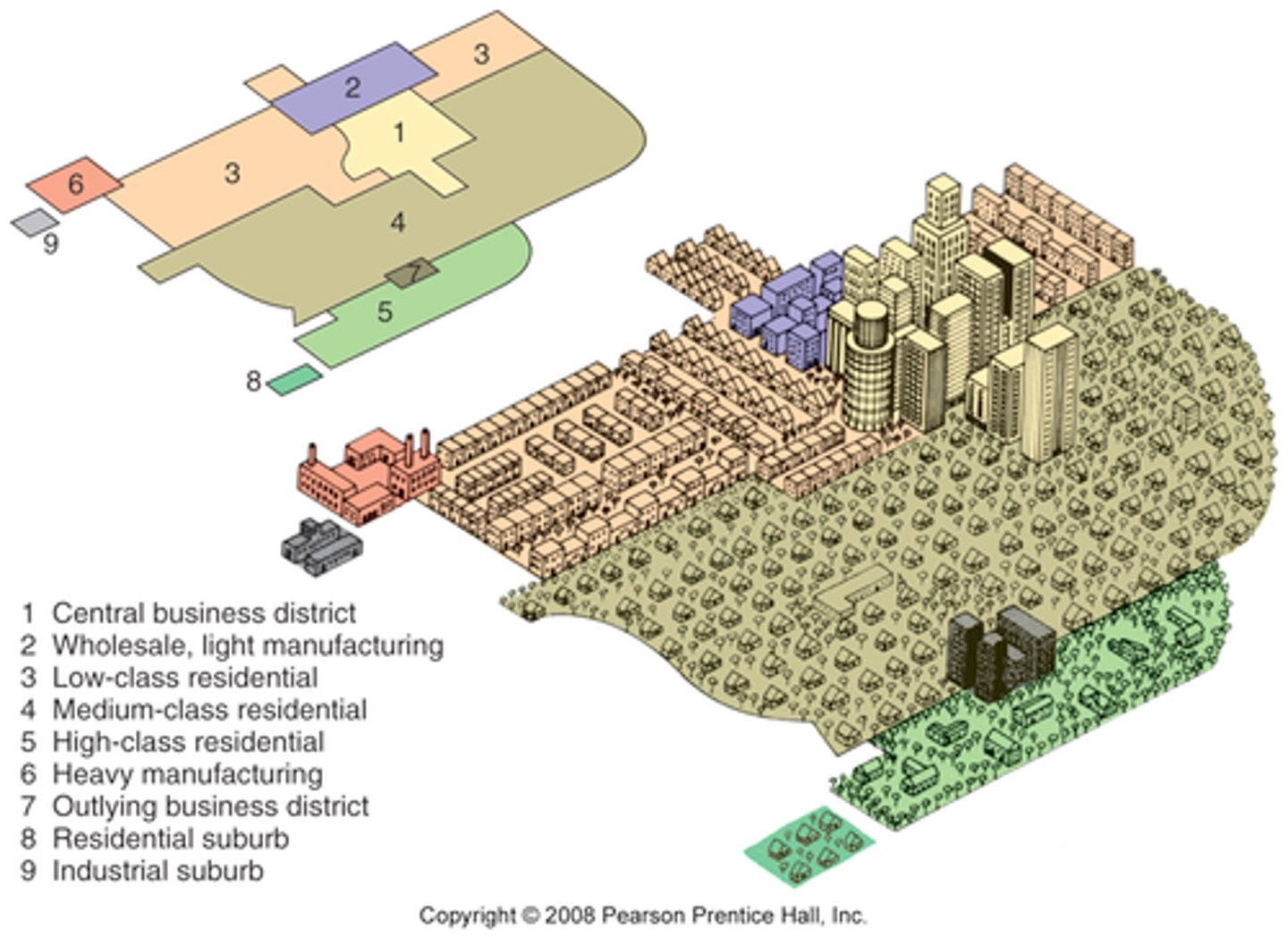
Urban Realms Model
Area of Use: Cities
Author: James Vance in the 1970s
What is the Urban Realms Model trying to explain?
The model explains and predicts changing urban growth patterns as the automobile became increasingly prevalent and large suburban "realms" emerged. The suburban regions were functionally tied to a mixed-use suburban downtown, or mini-CBD, with relative independence from the original CBD.
Strengths of the Urban Realms Model
-Each realm has its own economic strength, so overall the metropolis can be an economic powerhouse and can become self-sufficient
Weaknesses of the Urban Realms model
-If the model fails, then the city displays a large amount of urban sprawl
Effectiveness of the Urban Realms model
-This model is automobile dependent, and it can accommodate a large and growing population
Urban Realms Model diagram
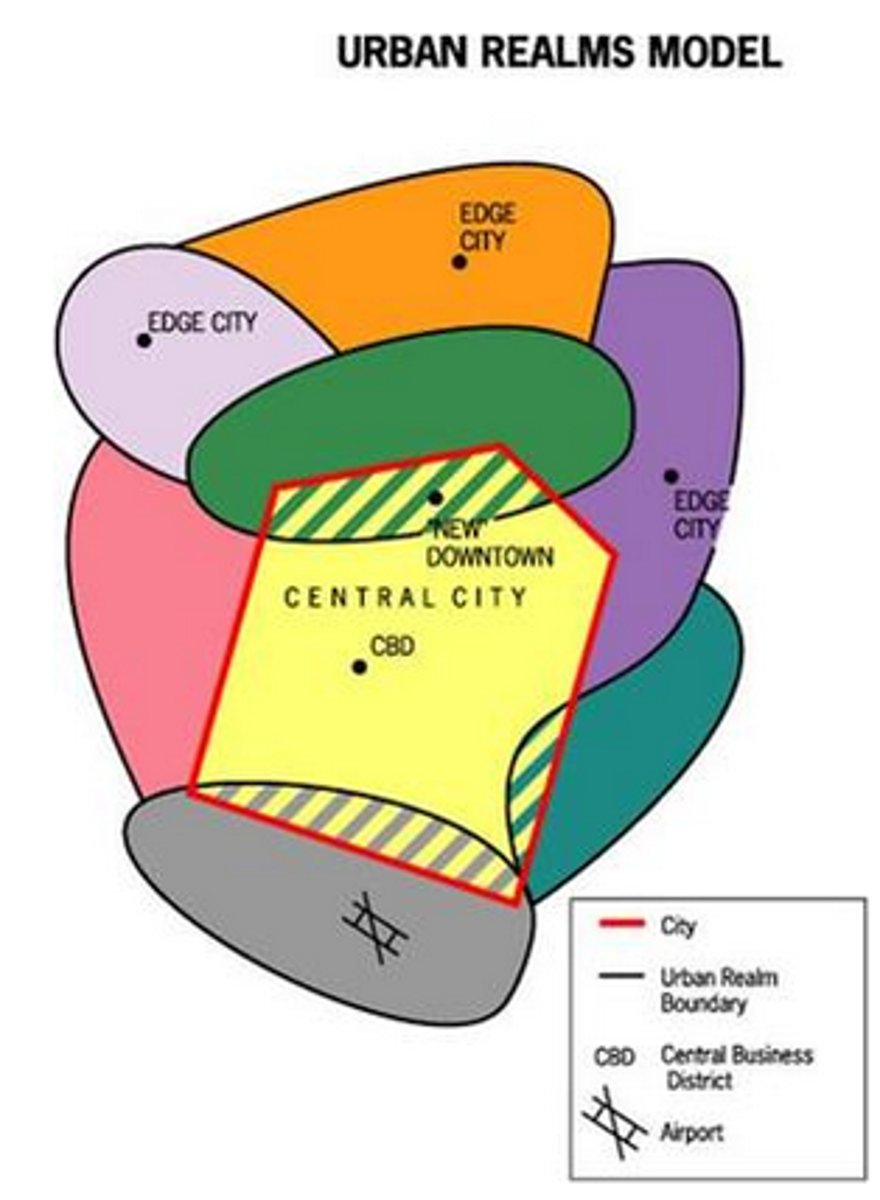
Concentric Zone Model
Area of Use: Cities
Author: Burgess in 1923
What is the concentric zone model trying to explain?
A city grows outward from a central area in a series of concentric rings, like the growth of a tree
Strengths of the concentric zone model
Many cities developed in the 1920s, so this model reflects this time period
Weaknesses of the concentric zone model
The concentric zone model does not allow for change in the city and does not allow for physical geographic barriers. The rings do not consider environmental factors
Effectiveness of the concentric zone model
The concentric zone model was based off of Chicago but it does not fit well with the modern day Chicago anymore
Concentric zone model diagram
1. Central business district
2. Zone of transition
3. Zone of independent workers' homes
4. Zone of better residences
5. Commuter's zone
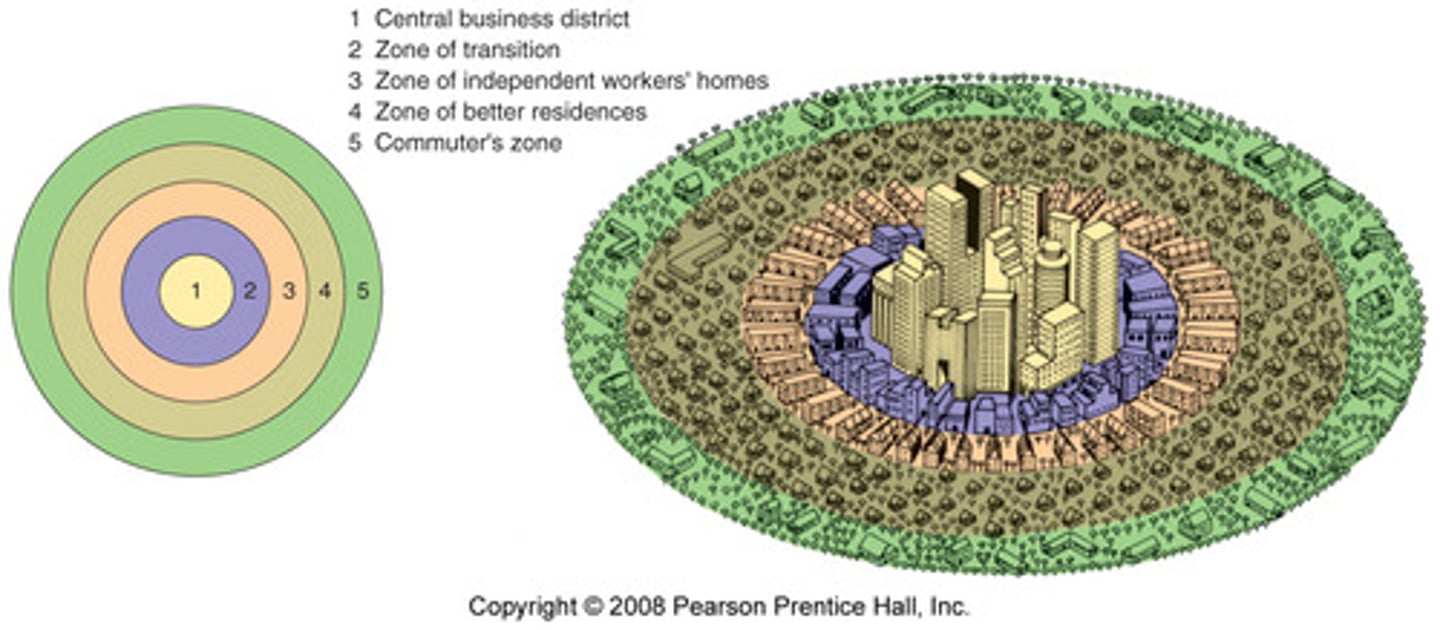
Southeast Asian City Model
Area of Use: Southeast Asian cities
Author: T.G. McGee
What is the southeast asian city model trying to explain?
High-class residential zones stem from the center, middle-class zones are in inner city areas and in suburbs, and low income zones are in the periphery
Strengths of the southeast asian city model
It is diverse due to the commercial zone
Weaknesses of the southeast asian city model
The market is far from the port
Effectiveness of the southeast asian city model
Many of the medium sized cities in Southeast Asia have the strongest similarities to this model. Since these cities are developing rapidly, aspects of the city are subject to change
southeast asian city model diagram
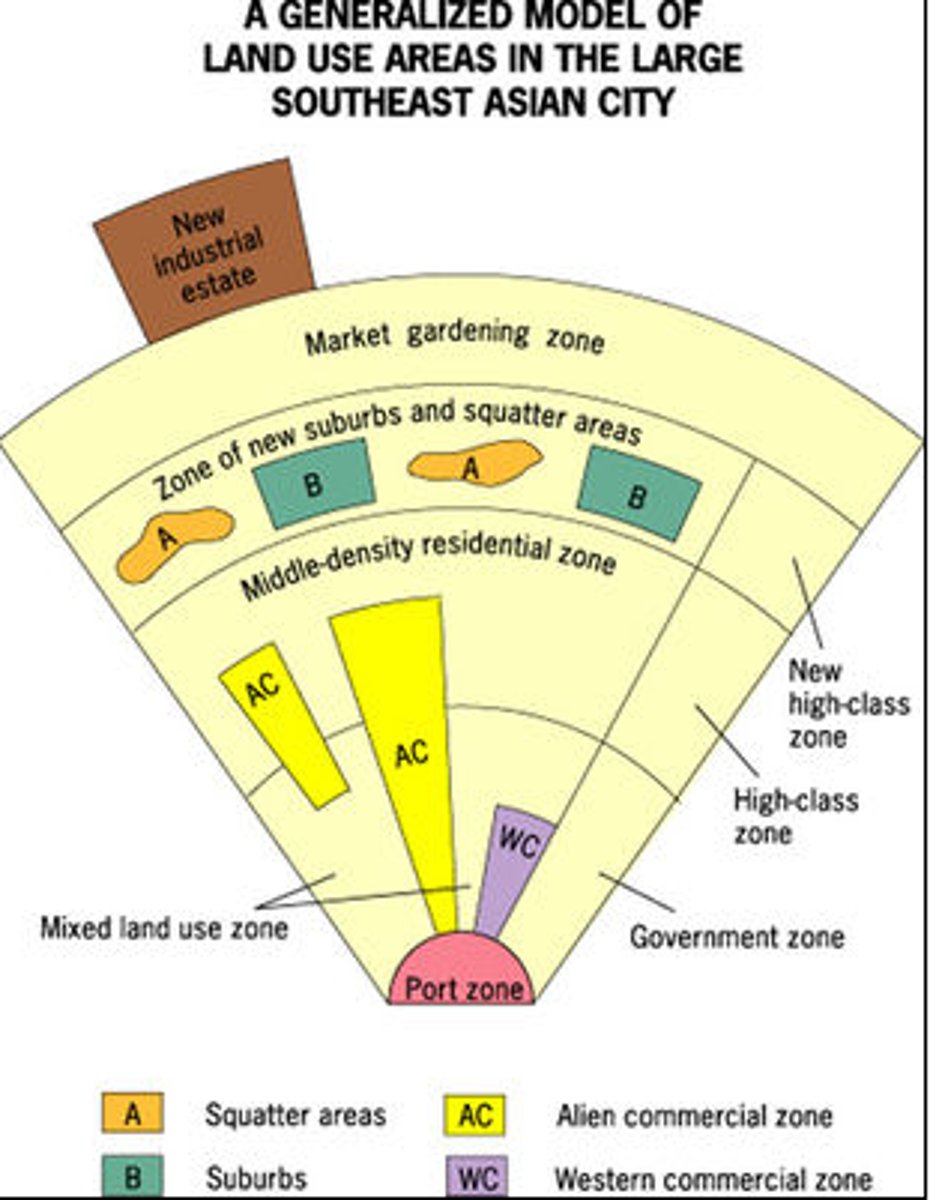
Latin American City Model
Area of Use: Latin America
Author: Ford and Griffin in 1980
What is the latin american city model trying to explain?
The model contains elements of Latin American culture and imprints of colonization and globalization.
Strengths of the latin american city model
-Easy geometric pattern
-Markets are closer to residential areas, less commuting
Weaknesses of the latin american city model
-With the poor on the outskirts of the zone they can easily become involved with crime
Latin American City Model diagram
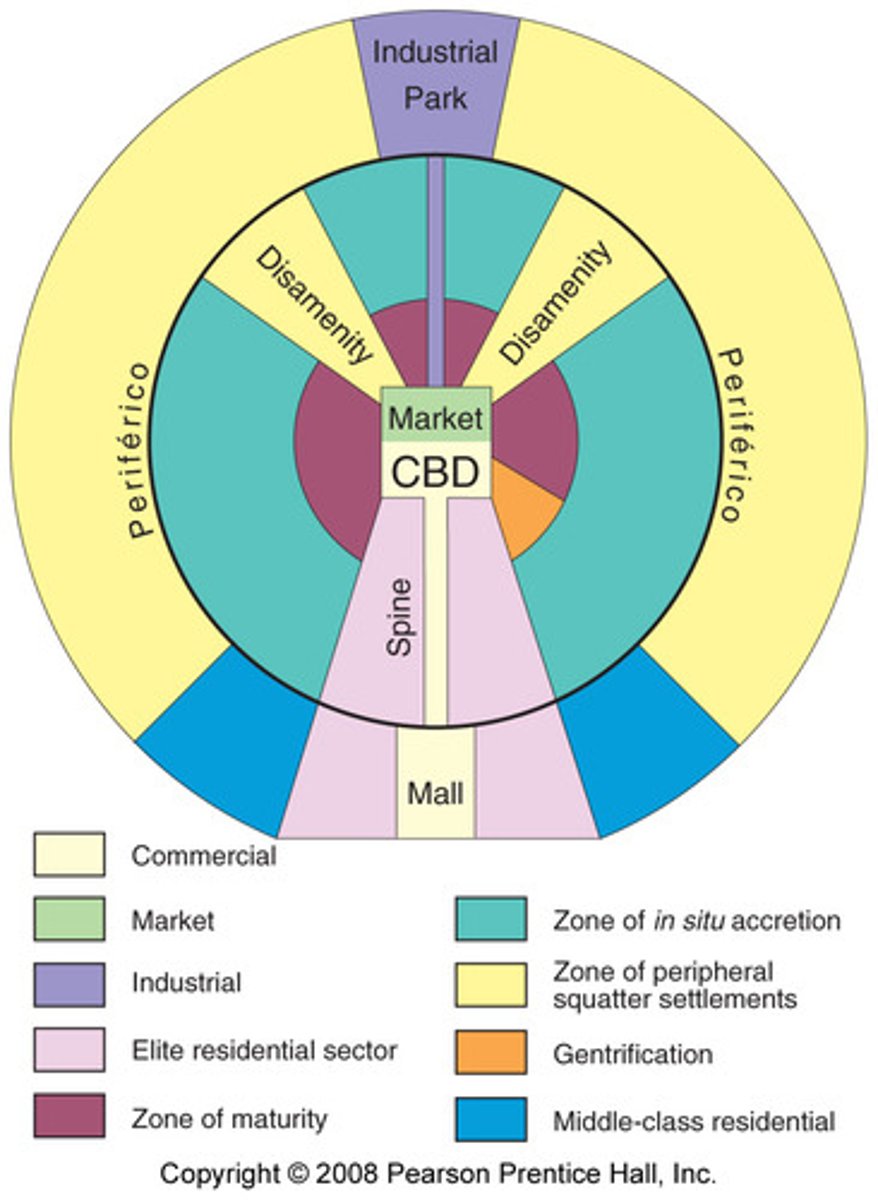
Sub-Saharan African City Model
Area of Use: Sub-Saharan African cities
Author: De Blij
What is the sub-saharan african city model trying to explain?
Ethnicities and types of CBDs change in rings/sectors as you travel further from the center, colonial CBD.
Strengths of the sub-saharan african city model
Market zones are close to the neighborhoods
Weaknesses of the sub-saharan african city model
Squatter zones have started
Sub-Saharan African City Model diagram
